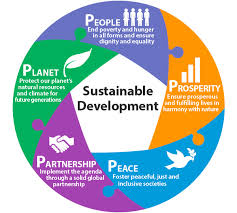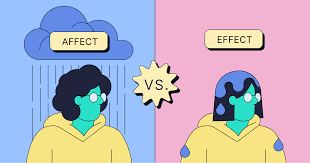The Rise of OpenAI’s ChatGPT: Transforming Conversations with AI
In recent years, artificial intelligence has made significant strides, particularly in the realm of natural language processing. One of the most groundbreaking developments in this field has been OpenAI’s ChatGPT. This AI-driven conversational model has transformed the way we interact with machines, offering a new level of sophistication in understanding and generating human-like text.
What is ChatGPT?
ChatGPT is a product of OpenAI, an organization dedicated to ensuring that artificial general intelligence (AGI) benefits all of humanity. Built on the powerful GPT (Generative Pre-trained Transformer) architecture, ChatGPT is designed to understand and generate human language with remarkable accuracy and coherence.
The model works by processing vast amounts of text data to learn patterns and structures in human language. This training enables it to generate responses that are contextually relevant and grammatically correct, making interactions feel more natural.
Applications of ChatGPT
The versatility of ChatGPT has led to its adoption across various industries and applications:
- Customer Support: Many companies use ChatGPT to provide instant support to customers, answering queries efficiently and effectively.
- Content Creation: Writers and marketers leverage ChatGPT for brainstorming ideas, drafting articles, or even generating creative content.
- Education: Educational platforms utilize ChatGPT as a tutor for students, offering explanations and assistance on a wide range of topics.
- Healthcare: In healthcare settings, ChatGPT assists with patient inquiries and provides information on medical topics.
The Challenges Ahead
Despite its impressive capabilities, ChatGPT is not without challenges. Ensuring that the AI produces accurate information remains a priority. Additionally, there are concerns about potential misuse or biases inherent in the training data that could influence outputs negatively.
OpenAI actively works on addressing these issues by implementing safety measures and continuously refining their models. They also encourage feedback from users to improve performance and reliability further.
The Future of Conversational AI
The development of ChatGPT marks just the beginning of what is possible with conversational AI. As technology advances, we can expect even more sophisticated models capable of deeper understanding and more nuanced interactions.
The potential for positive impact across industries is immense—from enhancing productivity to providing personalized experiences at scale. With ongoing research and development efforts by organizations like OpenAI, the future looks promising for AI-driven communication tools.
Conclusion
OpenAI’s ChatGPT represents a significant leap forward in how humans interact with machines through language. Its ability to comprehend context and generate coherent responses opens up numerous possibilities for innovation across various fields. While challenges remain on this journey towards perfecting conversational AI systems like ChatGPT—such as ensuring accuracy while minimizing bias—the progress made so far inspires optimism about what lies ahead in this exciting domain.
Exploring the 8 Key Advantages of OpenAI’s ChatGPT: From Natural Language Understanding to Innovation
- 1. Natural Language Understanding
- 2. Versatility
- 3. Efficiency
- 4. Scalability
- 5. Personalization
- 6. Continuous Improvement
- 7. Accessibility
- 8. Innovation Driver
Challenges of OpenAI’s ChatGPT: Addressing Emotional Intelligence, Misinformation, Context, Data Dependence, Privacy, and Complex Queries
- 1. Lack of Emotional Intelligence
- 2. Potential for Misinformation
- 3. Limited Contextual Understanding
- 4. Overreliance on Training Data
- 5. Security and Privacy Concerns
- 6. Difficulty Handling Complex Queries
1. Natural Language Understanding
ChatGPT’s natural language understanding is one of its standout features, allowing it to comprehend and generate text that closely mimics human conversation. This capability makes interactions with the AI more engaging and intuitive, as it can grasp context, recognize nuances, and respond in a way that feels authentic. Whether it’s answering questions, providing explanations, or participating in casual dialogue, ChatGPT’s proficiency in natural language processing ensures that users experience fluid and meaningful conversations. This human-like interaction not only enhances user satisfaction but also broadens the scope of applications across customer service, education, content creation, and more.
2. Versatility
OpenAI’s ChatGPT offers remarkable versatility, making it a valuable asset across diverse industries. Its adaptability allows for seamless integration into different sectors, serving a multitude of purposes ranging from enhancing customer support interactions to facilitating content creation processes. The ability of ChatGPT to cater to a wide array of needs showcases its utility and effectiveness in meeting the demands of various businesses and organizations, making it a versatile solution for improving communication and productivity in today’s fast-paced digital landscape.
3. Efficiency
ChatGPT offers a notable advantage in terms of efficiency by delivering instant responses, thereby boosting productivity and streamlining communication processes. This quick turnaround time allows users to receive information promptly, enabling them to make decisions faster and carry out tasks more efficiently. By providing immediate answers to queries or concerns, ChatGPT facilitates seamless interactions and accelerates the flow of communication, ultimately saving time and enhancing overall productivity in various contexts.
4. Scalability
One of the significant advantages of OpenAI’s ChatGPT is its scalability, which enables it to manage a high volume of interactions concurrently. This capability ensures that businesses and organizations can efficiently cater to diverse user needs without experiencing delays or bottlenecks. Whether it’s handling customer inquiries, providing educational support, or assisting with creative projects, ChatGPT can seamlessly engage with multiple users at once. This scalability not only enhances user experience by providing timely responses but also allows organizations to deploy AI solutions on a larger scale without compromising performance or quality. Such efficiency is particularly beneficial in sectors where rapid response times are crucial, ultimately leading to increased productivity and customer satisfaction.
5. Personalization
OpenAI’s ChatGPT excels in providing personalized experiences through its advanced ability to tailor responses according to individual queries and contexts. By analyzing the specific input it receives, ChatGPT can generate responses that cater directly to the user’s needs, preferences, and circumstances. This personalization enhances user engagement and satisfaction, creating a more interactive and customized interaction that feels tailored to each individual user.
6. Continuous Improvement
One of the standout advantages of OpenAI’s ChatGPT is its commitment to continuous improvement. OpenAI actively refines the model by incorporating user feedback and real-world interactions, which ensures that the AI remains up-to-date and increasingly effective. This iterative process allows the model to adapt to new language patterns, rectify inaccuracies, and enhance its overall performance over time. By prioritizing user input, OpenAI not only improves the accuracy and relevance of ChatGPT’s responses but also fosters a collaborative relationship with its users, ultimately leading to a more robust and reliable conversational AI experience.
7. Accessibility
One of the standout advantages of OpenAI’s ChatGPT is its accessibility, making it an appealing choice for users with varying levels of technical expertise. Whether you’re a seasoned developer or someone with minimal coding experience, integrating ChatGPT into applications or platforms is straightforward and user-friendly. OpenAI provides comprehensive documentation and support, allowing individuals and businesses to effortlessly harness the power of AI-driven conversation. This ease of integration means that more people can benefit from advanced AI capabilities without needing specialized knowledge, democratizing access to cutting-edge technology and fostering innovation across diverse fields.
8. Innovation Driver
OpenAI’s ChatGPT serves as a powerful innovation driver by unlocking new possibilities in how AI technology can be utilized to enhance user experiences and streamline workflows. By offering a sophisticated understanding of natural language, ChatGPT empowers developers and businesses to create more intuitive and responsive applications that cater to user needs. This capability not only improves the efficiency of existing processes but also inspires the development of novel solutions across various industries. From personalized customer service bots to creative content generation tools, ChatGPT is at the forefront of transforming interactions with technology, fostering an environment where innovation thrives and new opportunities emerge.
1. Lack of Emotional Intelligence
OpenAI’s ChatGPT, while highly advanced in its language processing capabilities, faces challenges when it comes to emotional intelligence. Unlike human interlocutors, ChatGPT may struggle to accurately interpret and respond to nuanced emotional cues in conversations. This limitation can lead to misunderstandings or responses that lack empathy and sensitivity. For instance, in emotionally charged discussions, the AI might provide responses that are technically correct but fail to address the emotional context or needs of the user. This gap in understanding emotions highlights the ongoing challenge of integrating genuine emotional intelligence into AI models, which is crucial for applications where empathetic interactions are essential.
2. Potential for Misinformation
One of the significant concerns associated with OpenAI’s ChatGPT is its potential for generating misinformation. Given its generative nature, ChatGPT can sometimes produce responses that are inaccurate or misleading, even if they appear plausible and well-structured. This issue arises because the model generates text based on patterns learned from vast datasets, which may contain outdated or erroneous information. As a result, users might receive answers that are not fact-checked or verified, leading to the spread of false information. This challenge underscores the importance of using ChatGPT with caution and emphasizes the need for continued development of mechanisms to ensure accuracy and reliability in AI-generated content.
3. Limited Contextual Understanding
One notable limitation of OpenAI’s ChatGPT is its occasional struggle with contextual understanding. Despite its advanced capabilities, the model can sometimes fail to fully comprehend the nuances and complexities of a conversation, resulting in responses that may seem irrelevant or out of place. This limitation arises because ChatGPT processes input based on patterns learned from vast datasets rather than genuine comprehension. As a result, it might miss subtle cues or rely too heavily on previous interactions without accurately interpreting the current context. This can lead to user frustration and highlights the ongoing challenge of enhancing AI’s ability to engage in truly coherent and contextually aware dialogues.
4. Overreliance on Training Data
A significant concern with OpenAI’s ChatGPT is its overreliance on training data, which can lead to biased or skewed outputs. Since the model learns from vast amounts of text data sourced from the internet, it inevitably inherits the biases present in that data. This can manifest in various ways, such as reinforcing stereotypes or providing responses that reflect prevailing societal prejudices. The challenge lies in ensuring that the AI not only understands language patterns but also navigates complex social nuances without perpetuating harmful biases. Addressing this issue requires ongoing efforts to refine training datasets and implement robust mechanisms for bias detection and mitigation, ensuring that AI systems like ChatGPT contribute positively to society.
5. Security and Privacy Concerns
Using ChatGPT for sensitive information exchange can present significant security and privacy concerns. As an AI model that processes and generates text based on user input, there is always a risk that confidential data could be inadvertently exposed or misused. While OpenAI implements robust security measures to protect user data, the nature of AI interactions means that any information shared with the model could potentially be stored or logged in ways users might not fully understand. This raises important questions about how personal and sensitive information is handled, stored, and protected. Users must exercise caution when discussing private matters with ChatGPT and remain aware of the potential risks involved in sharing sensitive data with any AI-driven platform.
6. Difficulty Handling Complex Queries
One of the notable challenges faced by OpenAI’s ChatGPT is its difficulty in handling complex or multi-layered queries. While the model excels at generating coherent and contextually relevant responses for straightforward questions, it often struggles when confronted with intricate topics that require nuanced understanding and deep analysis. This limitation can result in superficial or overly simplistic answers that fail to address the underlying complexities of a query. The challenge lies in the model’s ability to parse and integrate multiple layers of information, which is crucial for providing insightful responses to sophisticated inquiries. As a result, users seeking detailed explanations or solutions may find themselves needing to break down their questions into simpler components or turn to additional resources for comprehensive answers.




